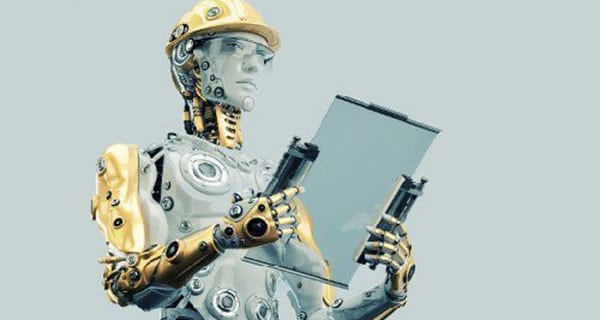 Will robots soon be replacing humans across broad swaths of the labour market?
Will robots soon be replacing humans across broad swaths of the labour market?
Judging by headlines touting driverless cars, machine learning and the rapidly-growing digital economy, one is tempted to answer “Yes.”
No one can doubt the sweeping effects of new technologies. Historically, tens of millions of jobs have been eliminated by successive waves of technology-enabled innovation in industries ranging from agriculture, transportation and manufacturing, to electricity and information and telecommunications services.
A similar process is underway today, fuelled by advances in artificial intelligence (AI), data science, and digital tools and platforms.
In past periods of widespread disruption, new jobs have been created in other occupations and industries to offset those lost due to the labour-displacing effects of new technologies. Will that happen this time?
There are mixed views.
Some researchers have produced jaw-dropping estimates of the number of jobs set to be destroyed by the relentless march of AI. Kai-Fu Lee, the former head of research for Google’s Asian operations, predicts that 40 to 50 per cent of U.S. jobs will be capable of being automated by 2035. Entrepreneur Elon Musk goes even further. He recently opined that with AI, humanity has “summoned a demon,” with smart machines ranking as “the biggest existential threat” to our species.
Other analysts paint a less frightful picture, in which AI alters many jobs and replaces some, but also stimulates new labour demand and fosters different forms of work. In this more optimistic scenario, automation doesn’t lead to mass unemployment.
My Business Council of B.C. colleague David Williams recently developed projections of the possible impact of automation on the labour market here in British Columbia. (David’s paper is available at www.bcbc.com.)
He finds that, from a purely technical or engineering standpoint, about 40 per cent of current B.C. jobs are in occupations with a “high potential” for automation in the next 20 years. Most of these fall into three broad categories: sales and service occupations; business, finance and office administration occupations; and trades, transport and equipment operators.
Approximately 37 per cent of B.C. jobs are in occupations judged to have a “low probability” of being automated. The remaining 21 per cent of jobs fall somewhere in-between.
AI and related technologies are increasingly capable of performing routine, repetitive and rules-based tasks that feature prominently in many of the occupations most vulnerable to disruption. Some examples are retail sales-persons, cashiers, food counter attendants, kitchen helpers, truck drivers, warehouse workers and general office support workers.
In contrast, occupations that involve tasks that rely heavily on perception and dexterity, creative intelligence, social abilities and leadership skill are harder to automate. Examples include senior-level managers, store, restaurant and warehouse managers, teachers, law enforcement personnel, academic researchers, and nurses and physiotherapists.
The methodology used to develop the estimates cited above is borrowed from recent academic studies. It has some important limitations. For one, the actual pace of automation will be strongly influenced by non-technical factors, such as labour supply and demand, the relative prices of labour and capital, future productivity growth, and the extent of regulatory and social acceptance of new technologies. Such non-technical factors are likely to slow the pace of automation in many parts of the economy.
For example, the technology that enables driverless vehicles is already well advanced, but take-up has been glacial. In fact, the biggest problem facing trucking and bus companies in Canada and U.S. is not how to incorporate driverless vehicles into their fleets, but finding enough warm bodies to fill the available jobs. Similarly, retailers and restaurants in many communities across the country are struggling to hire enough workers to operate their businesses.
The irony is that as public worries about automation mount, employers in many industries are grappling with the challenge of finding and retaining workers – even though some of the jobs performed by these workers may be at risk of technology-driven disruption.
For the moment, our economy is in the odd position of producing job vacancies across an array of occupations where the work tasks involved stand to be reshaped, restructured or perhaps eliminated by new technologies in the decades ahead.
Jock Finlayson is executive vice-president of the Business Council of British Columbia.
The views, opinions and positions expressed by columnists and contributors are the author’s alone. They do not inherently or expressly reflect the views, opinions and/or positions of our publication.



This social phenom is probably being discussed at length in university business curriculums, in sociology classes, and even psychology courses.
I always avoid self-service checkouts at the grocery store, because every time one of those is used, it convinces employers that one more employee can be laid off.
I was talking to a check-out girl today at Sobey’s, and asked her what she was going to do when no cashiers were needed anymore. She told me she was stressed out about it, admitted she wasn’t university material, and that she couldn’t afford it anyway with a young family.
Low-skill jobs, or repetitious jobs, are being eliminated, one at a time, every single week. At grocery stores, any retail outlet, banks, as well as the most astonishing trend — manufacturing jobs.
Have these companies even considered how far they can push the envelope with technology? Why do governments and society tolerate this? At one point will they have an “oops” moment and realize that the very products they produce via robots, are not being purchased by those robots? People purchase products — but, without jobs, they can’t.
And for those arguments about re-training — into what? Do they really believe that every single person is university material, and how many would be capable of becoming systems engineers? And, who’s going to pay for this re-training? And how can those people already raising families afford to attend university for several years?
Because, clearly, many of the people manning those check-outs, or toiling away on an assembly line, are happy and comfortable performing low-skill positions. And fully admit that anything beyond that is over their heads, that they just wouldn’t be capable of. Not everyone has the brainpower to aspire to high-end occupations.
Is that wrong? Do they deserve to be left behind?
Peter Parkin